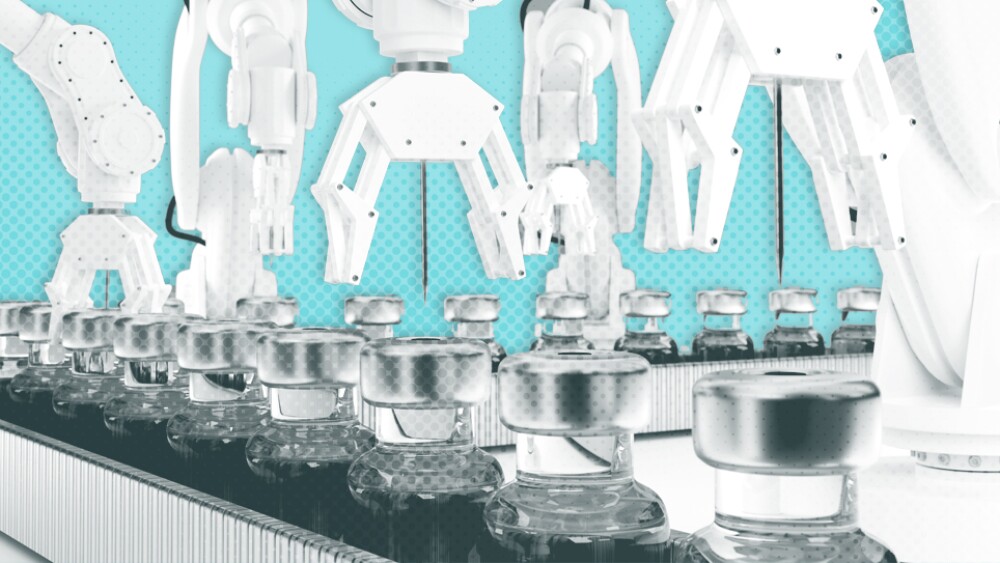The primary focus in scaling up production should first be the adoption of lean manufacturing principles used in virtually every other industry.
The field of cell and gene therapy relies on innovation from academia, which has produced amazing advances in cancer treatment over the past few years such as CAR T cells and therapies based on T cell receptors or tumor infiltrating lymphocytes, among others.
In most academic studies, the focus is demonstrating that a therapy appears to be safe and efficacious rather than on manufacturability or operational feasibility. Too often, the result is a manufacturing process and operation that lacks the essential elements for scaling out, resulting in startups that burn through their cash. This can happen long before they can get a therapy into the clinic or even after they have therapies on the market, as illustrated by bluebird bio’s recent acquisition by private equity.
After reviewing many master batch records (MBRs) from CGT production processes in my role as global commercial director at ScaleReady, I and my colleagues have concluded that a lack of experience with commonly used manufacturing techniques and a lack of manufacturing operations management are the root causes for CGT’s cost and scale problems. Unfortunately, leaders of CGT companies also lack knowledge of how to scale a manufacturing operation or run a small company, and thus too often jump to automation as a solution, when they should instead improve hiring processes and stabilize operations.
Failure To Pivot
The entities that license CGTs from academic centers for commercialization should immediately take action to make the course corrections needed to scale out. But they don’t. Instead, many rely on a false assumption that at some point automation will solve the inefficiencies caused by their lack of experience in manufacturing techniques and manufacturing operations. Worse, they perpetuate the poorly conceived manufacturing processes and operations they inherited, impeding future growth, even with automation.
The fix starts with the hiring process. Companies can be intimidated by the complexity of the science behind a CGT and overly staff for biology or immunology expertise to the exclusion of knowledge of basic manufacturing techniques common to mature industries from automobiles to computers to medical devices.
The CGT field needs to recognize that manufacturing is itself a rigorous scientific discipline. Graduates of manufacturing engineering and operations management programs are highly sought after in other industries. Yet in CGT, staff with the title “manufacturing engineer” tend to have backgrounds in chemistry, biology or immunology, with zero training in quality or manufacturing engineering. This is likely due to the false belief that CGT’s biological complexity makes it fundamentally different from other manufacturing industries. The truth is that it doesn’t. CGT manufacturing is a matter of efficiently moving liquid, and requires an operating system that is built for scale.
As a therapy shows promise and advances along the clinical pathway, the problem only gets compounded and scale-out possibilities evaporate. A change is desperately needed to integrate people and technology that can cost-effectively deliver CGT at scale.
Automation: An Enhancement, Not a Solution
Recently, CGT developers have been chasing automation as a fix for all manufacturing issues. But automation cannot change the fate of the industry unless companies first address their poorly structured manufacturing operations. It can only be fixed by the presence of people who know how to properly build scalable manufacturing operations and systems.
Without these people, CGT manufacturing workflows often evidence minimal or no adoption of basic lean manufacturing principles, which prioritize simplified, modular manufacturing approaches. Outside manufacturing experts we’ve hired to scrutinize CGT companies’ structures have found archaic inventory management systems, poorly designed quality management systems, little workflow design, minimal use of clever Kanban systems or sub-assemblies/sub-processes, poorly conceived part numbering systems and insufficient application of basic assembly-line manufacturing principles. None of these are issues that can be solved through automation.
In conversations with clients, we recommend that CGT leadership look outside the narrow confines of current hiring practices and employ manufacturing and quality personnel with diverse backgrounds from more mature industries. Before even considering the adoption of automation in a CGT manufacturing operation, the entire operation should be evaluated by experts who have a background in lean manufacturing and can help eliminate waste and streamline, simplify and stabilize operations.
One successful example comes from automobile production, which relies on lean manufacturing principles including the division of labor in an assembly line-based manufacturing environment—think Henry Ford and the Model T. Similarly, in CGT, steps like cell wash, cell selection and activation can be broken down into small and highly repeatable tasks completed in discrete intervals of time, allowing for disciplined scheduling of concurrent high-throughput production in a predictable setting.
Furthermore, sub-assembly/sub-processing manufacturing lines can be set up to feed the final assembly line with necessary components. For instance, preparation of buffers, media, cytokines, selection reagents and activation master mix can all be scheduled and set up separately to feed a final assembly line in a just-in-time manner for multiple concurrent manufacturing runs.
Lastly, experience and expertise are required to control the sequence schedule of these various assembly lines in a disciplined manner to ensure efficient operations.
Such an efficient process maximizes asset use and distributes overhead costs across a greater number of production runs, thereby leading to lower total costs of production per CGT product as production scales to larger volumes. Once these steps have optimized manufacturing, automation can then be explored to target any inefficiencies that remain.
Lean Before Machine
Industries manufacturing more complex products than CGT range from household appliances to planes to shampoo. All are running at a much larger scale than CGT, and all of them have adopted some form of lean manufacturing principles. Lean methodology prioritizes simplified, modular manufacturing approaches. Simplified manufacturing focuses on cost-effective tools and consolidated technologies that allow companies to optimize manufacturing capacity.
Available manufacturing technologies can be incorporated into a lean manufacturing workflow that can make production of CGT drugs viable in the long term, and which can be easily automated at the right stage. We urge CGT developers to look beyond the buzz of automation to focus on operational excellence, starting with the use of accessible existing technologies.






